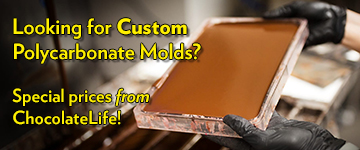Hello Clay,
Thank you for your detailed reply to our cry for help. Much appreciated.
We're working with 42C as the max working temperature as this is the guide we have been given by the raw chocolate experts we have learned the craft of raw chocolate making from. People like Amy Levin (ooosha.co.uk).
We have now grasped how a continuous-tempering machine works - thanks to a chat yesterday with the importer of Selmi in Australia. As we understand it, we would continue to work with a melting tank, adding 10kg of melted chocolate at 42C to the Selmi hopper to begin the tempering process, topping up as needed through the day.
The importer tells me there is an Australian raw chocolate maker working with the Selmi, but we don't know what max temperature they are working with. I will ask. Thank you for that advice.
On the inclusions front, after learning a little about the tempering devices,we have accepted that we will probably need to 'sprinkle' the bits like nuts and cacao nibs (they are under 3mm but the Selmi which can accommodate inclusions is the New Plus X which, at A$25,000, is beyond our budget). That's OK as the vibrating table will ensure the inclusions sink into the chocolate - whereas hand-banging the moulds (as we do at present) doesn't sink them in sufficiently.
If we find we need to stay under 42C to qualify as truly 'raw' chocolate by European and Australian standards, what would be your suggested method to automate or at least semi-automate the tempering process? We can only stone-temper so much by hand in a day! As we make the couverture from raw cacao butter and raw cacao powder a process that relies on the seeding method isn't really an option for us.
Thanks a million for sharing your knowledge and expertise with us.

